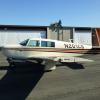Starting a New Arguement
-
Members Online
- valientbaby
- good2eat
- Cfidave
- Skyland
- Thedude
- 1980Mooney
- Rmfriday
- spistora
- 201Mooniac
- Mooney in Oz
- atpdave
- PeytonM
- 1967 427
- IvanP
- RGDantas
- Oscar Avalle
- caractacuspdoom
- cuddlesplatter
- mluvara
- amillet
- N201MKTurbo
- Dwb62
- Blaze
- hammdo
- GoDemonDeacons
- KLRDMD
- M20E for me
- rklems
- mpess
- Hank
- exM20K
- Crawfish
- ElkoRandy20J
- highflyer77
- DirkS
- FlyingDude
- ArtVandelay
- GMBrown
- eman1200
- Planegary


Recommended Posts